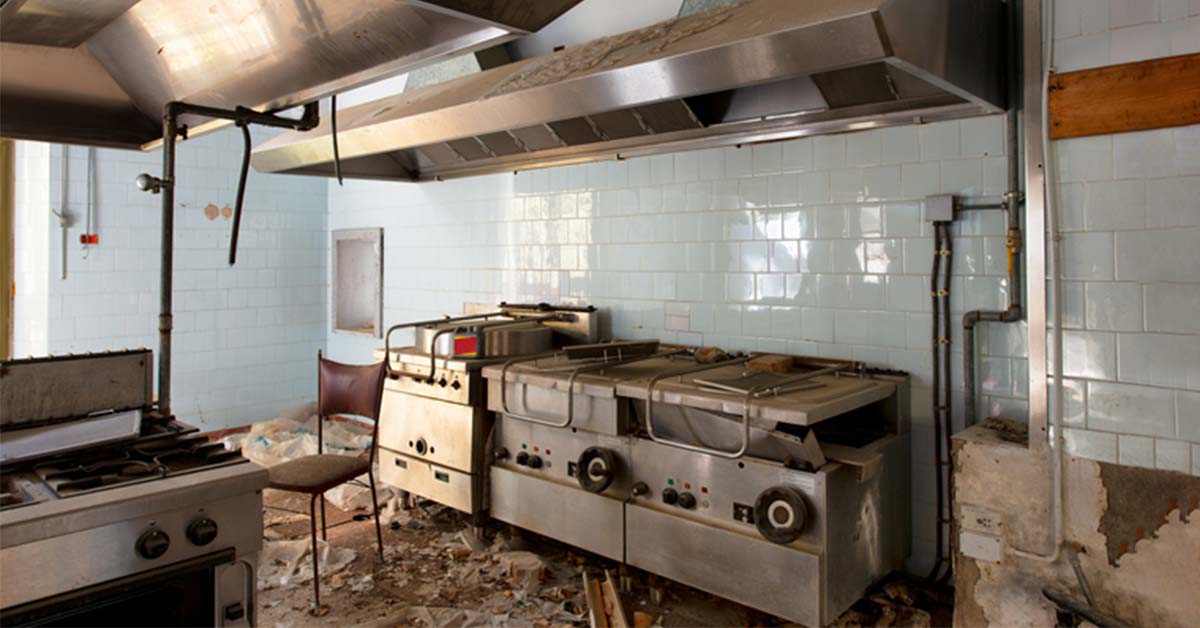Facing a property loss at your business? Don’t let the added stress of filing an insurance claim overwhelm you. Whether it’s a sudden fire, a storm destroying your roof, or a vehicle crashing into your building, our comprehensive guide is the start of your business’s road to recovery. We’ll walk you through every step, from initial contact to final settlement, so you can focus on what matters most: rebuilding your business.
Before Disaster Strikes

Before a loss occurs, it’s important to know your policy coverage. Get familiar with what’s covered, what isn’t, and the dollar limit of your coverage. Your insurance advisor can guide you through the details of your policy. Next, become your own risk detective. Conduct a thorough assessment of your business property and processes to identify vulnerabilities. Proactive measures like installing security cameras or implementing a few safety measures can significantly reduce the likeliness of an insurance claim. Finally, be proactive with regularly updating and tracking your business’s assets. By doing so, you can prove what you have lost when filing a claim.
How to File a Commercial Property Insurance Claim in 6 Steps
Hopefully, you’ll never have to file a business insurance claim, but being prepared and knowing the steps can ensure a smooth and quick financial recovery. In fact, 40% of small businesses end up utilizing their commercial coverage, so understanding the process is crucial. Follow these steps to file a business insurance claim the right way:
1. Assess the Situation

Depending on the type of loss, you may need to call local authorities to ensure everyone’s safety in and around your business. While this is not a claim requirement, having a police report outlining what happened can help establish liability or validate the loss for your insurance company. If authorities are not present, carefully inspect your business area for safe entry. If it is unsafe, do not put yourself or others at risk. Once the premise is safe to enter, turn off the electricity, water, and gas, if possible. Next, meticulously document all damages with pictures and videos. Avoid discarding anything except perishable food until you meet with an insurance adjuster. When tossing out perishables, take pictures for documentation. Some business owner’s policies (BOP) cover perishable stock under their food spoilage coverage.
2. Determine How to File an Insurance Claim
Next, determine your insurance company’s preferred claim filing method. Many offer online options to file a claim, while some require you to speak with an adjuster over the phone. The claims process can involve downloading and mailing documents, uploading documents to their online portal, or using their specialized app. Knowing your provider’s process will make it easier and quicker to file a claim.
3. Gather Necessary Information and Report an Insurance Claim
Before calling your insurance company to report the loss, you’ll need to gather some key information your insurance adjuster will need such as:
- Contact information for you and others involved.
- Policy number
- Type of loss you’re submitting (property, auto, general liability, or workers’ compensation)
- Nature of the loss (fire, theft, water damage, etc.)
- Date and time of the incident
- A description of the loss or any injury (pictures and videos)
- Police or fire department reports
- Any witnesses and their contact information
- Inventory of damaged items including their receipts, invoices, or proof of purchase
- Financial records or tax filings if you’re claiming business interruption or loss of income
4. Secure Your Property
To prevent further damage, make temporary and inexpensive repairs, but hold off on permanent fixes. For example, board up broken windows or tarp a leaky roof. Keep receipts for materials you buy as they may be reimbursed. Avoid fixing any damage yourself as this can affect the claims process. Your adjuster may need to visually inspect the damage before repairs begin, and they’ll be responsible for documenting everything properly. Rely on your adjuster’s guidance for further securing your property. They can offer tips on protecting undamaged items, preventing further water or fire damage, and mitigating any potential safety hazards.
5. Work With Your Assigned Adjuster

Your assigned adjuster is your key to recovery. It’s important to stay in close contact and be open and honest about the damage and your situation. Transparency builds trust and can help expedite the process, getting your business back up on its feet as soon as possible. Keep organized by taking notes and documenting interactions. Expect a company field adjuster to inspect your property, at which point clarify repair responsibilities and obtain information on the next steps. Don’t be afraid to ask questions such as confirming repair estimates and the expected timeline for settlement. Provide any records that can prove the value of damaged equipment. If you need to claim business interruption or loss of income insurance, you will need to prove financial records to determine the amount of business lost.
6. Review Claim Settlement Offer
Your adjuster will review your policy and documents to determine coverage and eligibility. Once complete, your adjuster will present a settlement offer. Carefully review it and ask questions. Open communication and patience are key here. Remember, this claim process takes time, so be patient. If there is a disagreement about the claim settlement, ask for the specific policy language in question to determine if you and the insurance company interpret the policy the same. Don’t rush into the settlement. If the offer made by an insurance company does not meet your expectations, be prepared to negotiate within your policy’s limits to get a fair settlement. Once the settlement is agreed upon, you’ll receive payment and can proceed with repairs to your business property.
What Happens If Your Insurance Claim Is Denied?

If your claim is denied, first review the terms of your insurance coverage, and ask your adjuster for a clear written explanation outlining the specific reason for denial. This helps you understand their rationale and identify potential areas for appeal. Policies are very specific and will include specific clauses or exclusions that may have led to the denial. For example, business insurance policies include exclusions for flood damage, fraud, or late claim filing. Many insurance companies have internal appeals processes. Follow their procedures and submit your appeal in writing, addressing each point of denial and providing new evidence if available. If the internal appeal fails, you could file a complaint with your state’s insurance commissioner. They can investigate your claim and potentially intervene on your behalf. You may also consider consulting with an insurance lawyer or public adjuster. They can offer expert advice on the denial, review your policy, and advise on potential appeal strategies.
When Is It Worth It to File a Business Insurance Claim?
Several factors influence whether a business insurance claim is worth filing. Some of those factors include whether you are at fault, your policy coverage, the amount of the damage, and the type of incident. It’s worth filing a business insurance claim when the damage exceeds your deductible, while minor losses might be cheaper to handle yourself in the long run. Remember, claim history can affect future premiums, so consider the long-term impact before filing smaller claims. Insurers keep records of claims and share information across the industry. So, if you have a history of filing claims, your risk profile may increase potentially leading to higher premiums or even non-renewals by your insurance provider.
Is Your Business Truly Covered?
Don’t wait until disaster strikes to find out you have gaps in your coverage. Speak with one of our experienced Commercial Insurance Specialists today at (866) 570-7335 to review your policy. Our specialists can also provide you with a tailored commercial insurance quote to ensure you have the necessary coverage to protect your business.
The information in this article is obtained from various sources and offered for educational purposes only. Furthermore, it should not replace the advice of a qualified professional. The definitions, terms, and coverage in a given policy may differ from those suggested here. No warranty or appropriateness for a specific purpose is expressed or implied.


